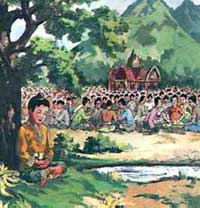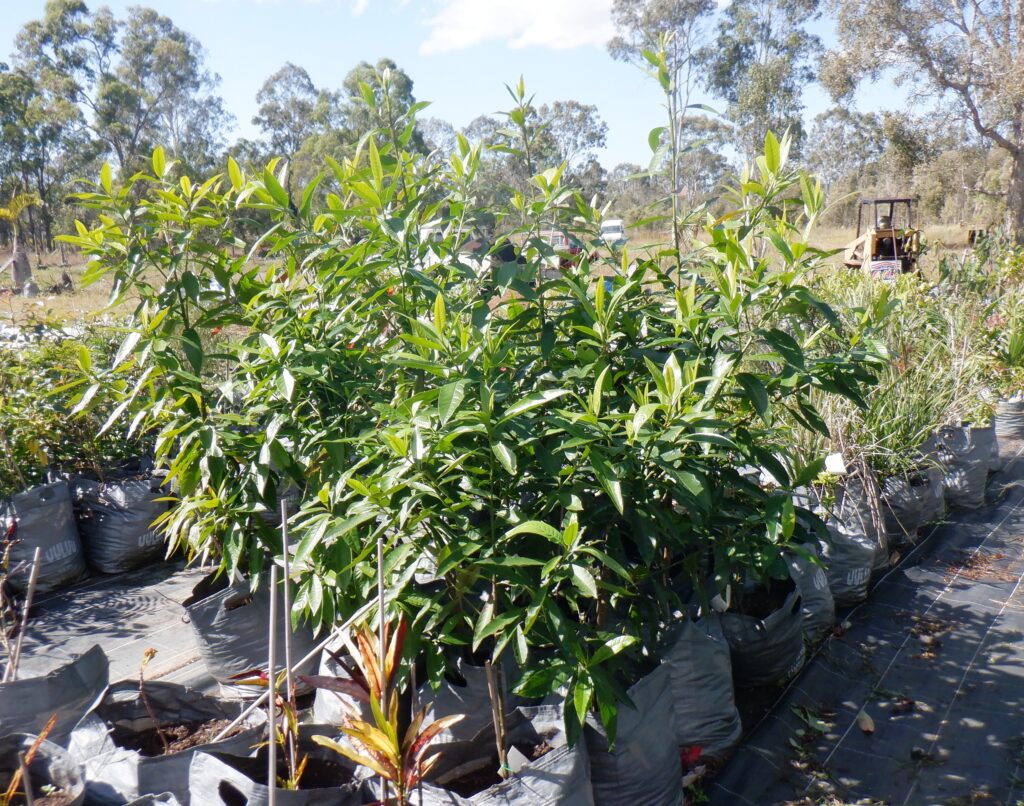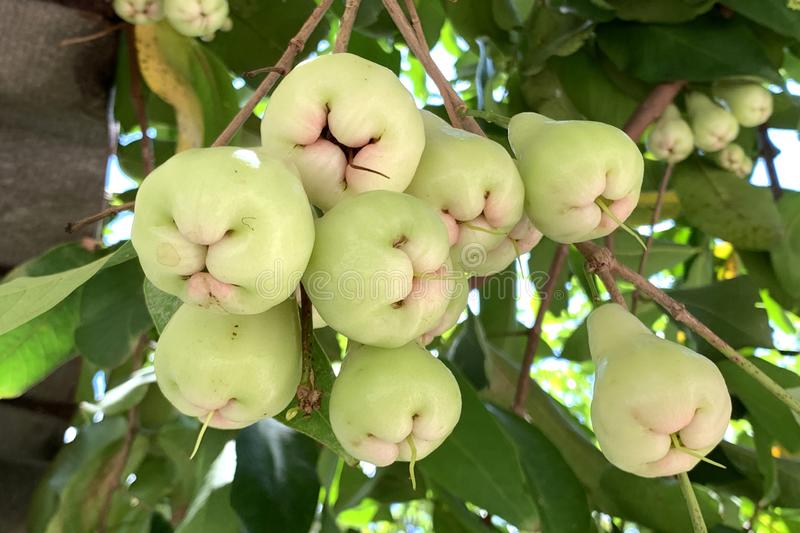
Syzygium jambos, Rose Apple – a Sacred Tree of Enlightenment from the Land of Jambudvipa



Rose Apple Tree (Jambu Tree, Enlightenment Tree) is sacred to Buddhism

 Under the Tree of Enlightenment Under the Tree of Enlightenment | In ancient Sanskrit, the land now called India was referred to by the ancient Indians themselves as Jambudvipa, which means Rose-apple-land (jambud = rose apple; vipa = land). With its thick, leathery leaves and great span of branches, the Jambu Tree offers great shade and coolness against the sun. Story tell that Lord Buddha sat in the shade of a Jambu Tree. He was watching men and oxen as they ploughed the land in readiness for a new crop and meditating on the burdens we all must carry in this life. There he sat under the tree determined that he would either reach enlightenment or die where he sat. Later the tree to be called the Bodhi Tree (Tree of Enlightenment). And then it happened! He got an enlightenment experience seing his previous births and realized that people are born and reborn into different states according to their deeds. |
The Plant

The Flower

The Fruit

Care and Cultivation History


For optimum fruiting rose apples should be fertilized two or three times a year with a general complete fertilizer containing all micronutrients. On high pH soils some micronutrient deficiencies might develop which would require treatment with nutritional sprays.

Rose apples are easily propagated by seeds, with only about 3 years for seedlings to start flower and fruit production. Young trees start to grow slowly, but once well established require very little maintenance. They can be grown as container plants and will easily fruit in pots. The Rose Apple is cultivated and naturalized in many parts of tropics, including India, SE Asia, and the Pacific Islands. It was introduced into Jamaica in 1762 and became well distributed in Bermuda, the Bahamas, the West Indies and, at low and medium elevations, from southern Mexico to Peru.

In 1825 few young trees were taken from Brazil to Hawaii by ship. The rose apple became naturalized on the islands of Kauai, Molokai, Oahu, Maui and Hawaii. In 1893, it was reported as already cultivated in Ghana. It is semi-naturalized in some areas of West Tropical Africa and on the islands of Zanzibar, Pemba and Reunion. It is believed to have been first planted in Queensland, Australia, about 1896. A tree obtained from an Italian nursery has grown and borne well on the coastal plain of Israel. The Rose Apple was introduced into Florida, at Jacksonville, around 1877. In California, it is planted as far north as San Francisco. It flourishes in the tropical and subtropical climates and grows from sea level to 3000 ft elevation in its native range. In Jamaica, it is naturalized from near sea-level up to an altitude of 3,000 ft; in Hawaii, from sea-level to 4,000 ft. In India, it ranges up to 4,400 ft; in Ecuador, to 7,500 ft. At the upper limits the tree grows vigorously but may not bear fruit.

Uses
| Food Around the tropical world, many people, especially children, like to eat rose apples as an out of hand fruit, and also use them to make stewes, preserves, jellies and jams. The jellies and preserves made from Rose Apple retain the distinctive rose flavor. The fruit can be stewed with some sugar and served as dessert. The fruit is made into jam or jelly with lemon juice added, or more frequently preserved in combination with other fruits of more pronounced flavor. It is also made into a syrup for use as a sauce or to flavor cold drinks. In Jamaica, the halved or sliced fruits are candied by stewing them in very heavy sugar syrup with cinnamon. Other uses Fruit extract can be used to make a sweet smelling rose water. The ripe fruits, with seeds removed, could be distilled to make a “rosewater” equal to the best obtained from rose petals. The flexible branches have been employed in Puerto Rico to make hoops for large sugar casks, and also are valued for weaving large baskets. The bark has been used for tanning and yields a brown dye. The sapwood is white. The heartwood is dark-red or brown, fibrous, close-grained, medium-heavy to heavy, strong; and has been used to make furniture, beams for construction, frames for musical instruments (violins, guitars, etc.). A yellow essential oil, distilled from the leaves, used in the perfume industry. The flowers are a rich source of nectar for honeybees and the honey is a good amber color. Much comes from the San Cristobal River Valley in Cuba. Medicinal Uses In India, the fruit is regarded as a tonic for the brain and liver. An infusion of the fruit acts as a diuretic. A sweetened preparation of the flowers is believed to reduce fever. The seeds are employed against diarrhea, dysentery and catarrh. In Nicaragua, it has been claimed that an infusion of roasted, powdered seeds is beneficial to diabetics. They say in Colombia that the seeds have an anesthetic property; Cuban people believe that the root is an effective remedy for epilepsy. However, according to scientific research, both the seeds and the root are toxic and should be used with a caution. The leaf decoction is applied to sore eyes, also serves as a diuretic and expectorant and treatment for rheumatism. |

This is what is for sale currently:- In 45 litre grow bags.


Any questions or if buying, contact me HERE


